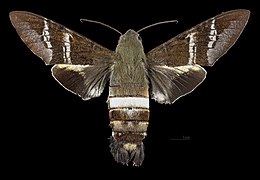Aellopos fadus
In today's world, Aellopos fadus is a topic that has gained great importance and relevance in all areas of daily life. From the personal, through the professional, to the social sphere, Aellopos fadus has become a point of interest and constant debate. Its impact has been notably perceived in various aspects, generating conflicting opinions, theories and research that seek to fully understand its influence on current society. In this article, we are going to address the different aspects of Aellopos fadus, exploring its meaning, implications and possible paths for its future development.

| Fadus sphinx | |
|---|---|

| |
| Scientific classification | |
| Domain: | Eukaryota |
| Kingdom: | Animalia |
| Phylum: | Arthropoda |
| Class: | Insecta |
| Order: | Lepidoptera |
| Family: | Sphingidae |
| Genus: | Aellopos |
| Species: | A. fadus
|
| Binomial name | |
| Aellopos fadus | |
| Synonyms | |
| |
Aellopos fadus, the Fadus sphinx, is a moth of the family Sphingidae. The species was first described by Pieter Cramer in 1776.
Distribution
It lives in Central America and the northern part of South America.
Description
The wingspan is 57–60 mm.[2]
-
Male dorsal
-
Male ventral
-
Female dorsal
-
Female ventral
Biology
Adults are on wing year round in the tropics. They feed on nectar from various flowers, including Abelia species.

References
- ^ "CATE Creating a Taxonomic eScience - Sphingidae". Cate-sphingidae.org. Archived from the original on 2012-11-08. Retrieved 2011-10-19.
- ^ "Aellopos fadus The Fadus Sphinx". Silkmoths. Archived from the original on 2015-04-28. Retrieved 2011-10-19.
External links
- Lotts, Kelly & Naberhaus, Thomas (2017). "Fadus sphinx Aellopos fadus (Cramer, 1776)". Butterflies and Moths of North America. Retrieved November 19, 2018.



